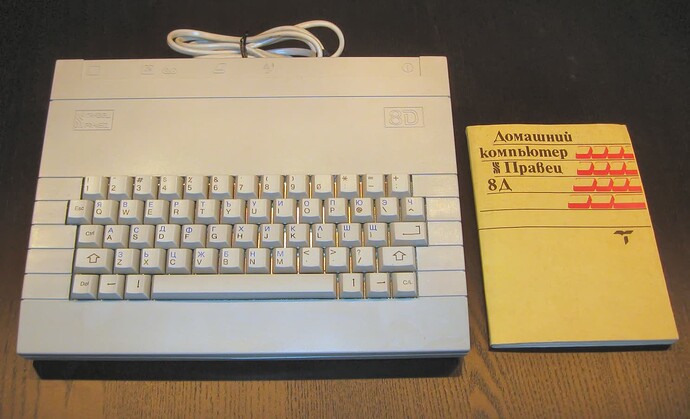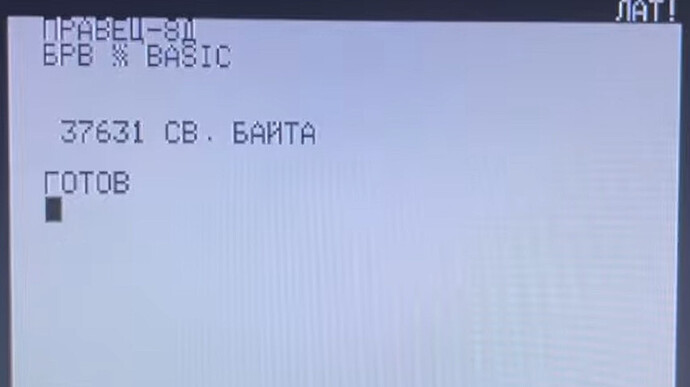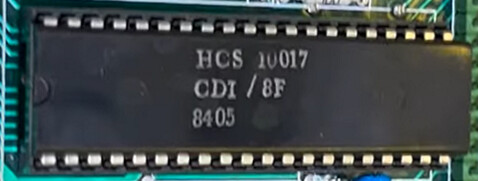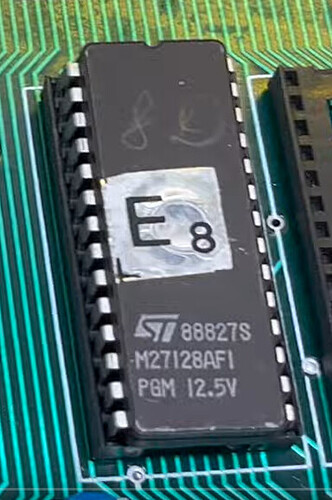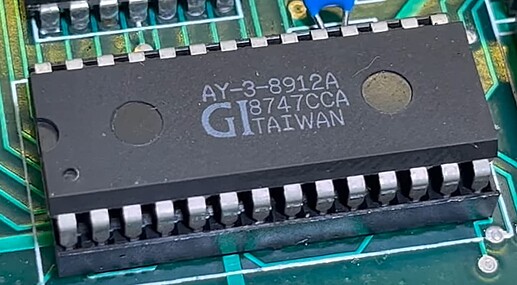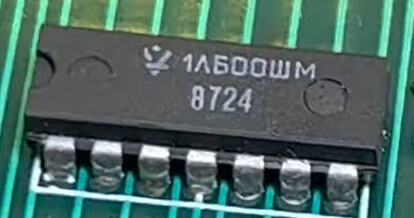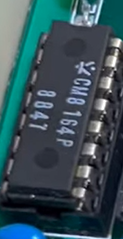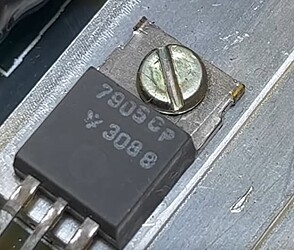The Pravetz 8D is a personal computer that was produced in Bulgaria during the 1980s. It was part of the Pravetz series of computers, which were notable for being among the few computer brands manufactured in Eastern Europe during the Cold War. The Pravetz 8D specifically was designed to be compatible with the Apple II, one of the most popular computers in the West at that time. This compatibility allowed for the use of a wide range of software. The computer featured an 8-bit processor and was commonly used in schools and government institutions in Bulgaria.
(source)The Pravetz 8D production began in the early 1980s, around 1982, and continued until the late 1980s. It was produced in the town of Pravetz, Bulgaria, at a factory that was part of the state-owned enterprise specializing in electronics and computing equipment. This factory was one of the key centers for computer manufacturing in Eastern Europe during the Cold War era. The cessation of Pravetz 8D production was part of the broader decline of the Pravetz computer line as Bulgaria transitioned from a planned to a market economy and faced increasing competition from Western computer products.
(source)The Pravetz 8D, which was modeled closely after the Apple II, featured the following technical specifications:
- CPU: It was equipped with a Synertek SY6502A processor, which is an 8-bit microprocessor running at 1 MHz, similar to the one used in the Apple II series.
- Memory: The base model typically came with 48 KB of RAM, which could be expanded.
- Ports: It included several ports for peripherals, such as a parallel printer port, two serial ports, and slots for expansion cards. Additionally, it supported composite video output and could connect to disk drives.
-
CPU in Oric Atmos: The Oric Atmos used the 6502A microprocessor, which is an 8-bit CPU running at 1 MHz. This was a popular choice for many home computers of the early 1980s, known for its efficiency and the ease of programming.
-
CPU in Commodore 64: The Commodore 64 was equipped with the MOS Technology 6510 microprocessor. This 8-bit CPU, closely related to the 6502 processor used in many other early computers, operated at approximately 1 MHz. This CPU was one of the defining features of the Commodore 64, contributing to its capability and popularity during its time.
-
CPU in Правец 8Д: The Правец 8Д (Pravetz 8D) used the Synertek SY6502A processor, an 8-bit microprocessor running at 1 MHz. This processor was based on the MOS 6502, widely used in various computer models during the early 1980s.
Links:
- Pravetz (computer) - Wikipedia
- Pravetz 8D Facebook Group
- Oricutron For Developers
- GitHub - OulanB/OricVGA32: Oric 1/Atmos emulator on lilygo TTGO VGA32 V1.4 board
- Търся съдържанието на ROM на ранните Правец-8Д - Ремонт, схеми, документация, литература - Форум за любителите на Стара електроника
- Орик Атмос (Правец-8Д) софтуер, програми, ревюта и информация.
- Публикации - История на компютри Правец - A.Museum
Videos
Interesting Chips
CPU
Pravetz 8D used the Synertek SY6502A processor, which is a variant of the MOS 6502 microprocessor. Synertek was one of the manufacturers licensed to produce the 6502 microprocessor, and their chips were utilized in various computers, including those produced in Eastern Europe, like the Pravetz series. This inclusion helped make the Pravetz 8D compatible with a wide range of software designed for similar 6502-based systems.
IO
The chip in the picture is labeled as “R6522P R6522-31 8942.” This indicates it’s an R6522, which is a VIA (Versatile Interface Adapter). The R6522 VIA was designed to provide I/O capabilities for interfacing with peripheral devices. It includes features such as two 8-bit bidirectional parallel I/O ports, timers, and a shift register, making it suitable for controlling various peripheral functions. The number “8942” suggests it was manufactured in the 42nd week of 1989.
EPROM
The chip in the image is labeled as “ST M27128AF1.” This is a 128 kilobit (16 kilobyte) UV-erasable, programmable read-only memory (EPROM) chip. It is manufactured by STMicroelectronics. The “P/M 12.5V” indicates the programming voltage required to write data to the chip. EPROMs like this one are used for storing firmware or software in a way that allows it to be reprogrammed using UV light to erase the data. This type of memory was commonly used in computers, embedded systems, and other electronic devices during the 1980s and 1990s.
Soung Generator (PSG)
The chip in the image is labeled as “AY-3-8912A.” This is a programmable sound generator chip (PSG) made by General Instrument, commonly used in various home computers, video game consoles, and arcade machines during the late 1970s and 1980s. The AY-3-8912A is known for producing three channels of square wave sound and one channel for white noise, which made it popular for generating sound effects and music in many electronic devices of that era.
Video Display Processor (VDP)
The chip in the image is labeled “Texas Instruments TMS9918.” This is a Video Display Processor (VDP) chip widely used in various home computers and video game consoles from the late 1970s and throughout the 1980s. The TMS9918 is known for handling graphics generation in systems like the Texas Instruments TI-99/4A, ColecoVision, and MSX computers, among others. It supports modes like text, graphics, and multicolor modes, and is responsible for generating video signals to display on a monitor or TV screen.
1ЛБООШМ 8742
What is this chip with 1ЛБООШМ 8742 written on it?
RAM
The chip in the image is marked with “XICOR 8841 28AF,” indicating that it is a product of Xicor, a company known for manufacturing non-volatile memory chips and other integrated circuits. The numbers “8841” likely represent a date code, suggesting the chip was manufactured in the 41st week of 1988.
Given the marking “28AF,” it could be a specific model of a non-volatile EEPROM (Electrically Erasable Programmable Read-Only Memory) or another type of memory or specialized integrated circuit. Xicor specialized in EEPROMs which were widely used for storing small amounts of data that must be saved when power is removed, often in industrial and automotive applications.
For a precise identification, including its function and specifications, access to more detailed datasheets or additional labeling on the chip would be necessary.
HEX Inverter

The “TESLA VN8 MH74S04” chip is likely a version of the 7404 hex inverter chip manufactured by Tesla, a former Czechoslovakian electronics company. It functions as a logic gate and is commonly used in digital electronics for signal inversion.
Voltage Regulator
The chip with “7905CP 3088” appears to be a voltage regulator, specifically the LM7905CP. It regulates voltage and is commonly used to provide a stable 5-volt supply in electronic circuits. The “3088” marking could indicate a date or lot code.
